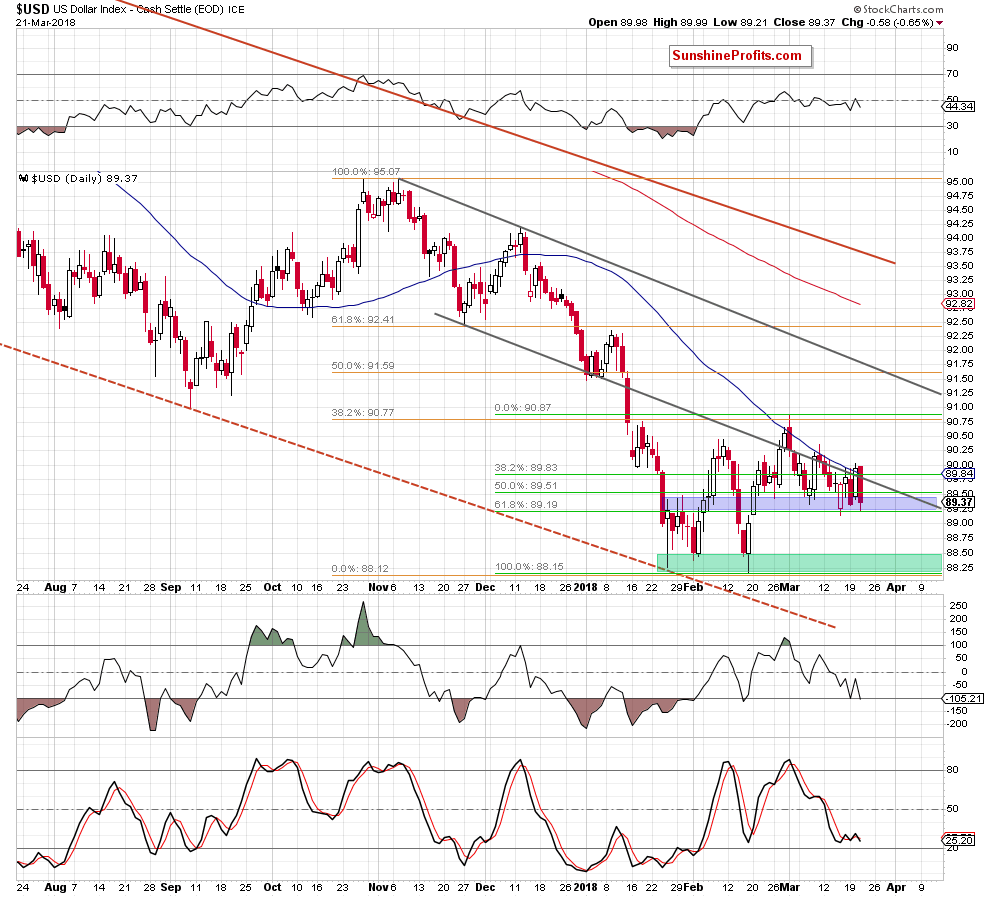Although the Federal Reserve raised interest rates yesterday, the forecast for two more hikes this year (instead of three) disappointed market participants who turned their backs on the U.S. dollar, triggering quite sharp selloff. But did anything really change in the technical picture of the greenback?
Before we analyze our currency pairs, let’s check what changed (and what has not changed) in the short-term picture of the USD Index after yesterday’s news.
USD Index in Focus

Looking at the daily chart, we see that the USD Index bounced off the blue support zone in the previous week and closed Tuesday’s session above the previously-broken lower border of the black declining trend channel and the 50-day moving average.
Although this was a positive event, we were a bit skeptical about this improvement, because this was nothing more than what we already saw in the previous weeks. When we take a closer look at the daily chart, we see that very similar situation took place at the end of February and also at the beginning of March. In both previous cases, the index didn’t climb above the moving average, but yesterday’s price action clearly shows that history repeated itself once again despite this tiny improvement.
So, what’s next for the USD Index? Taking all the above into account and combining it with the fact that the blue support zone continues to keep declines in check, we believe that what we wrote in our Forex Trading Alert a week ago is up-to-date also today:
(…) the USD Index stuck between the support zone and the resistance line.
Since the beginning of the month, the index is trading in a narrow range between the lower border of the black declining trend channel and the blue support zone based on the late January highs, late February lows and two Fibonacci retracements (the 50% and 61.8%). This means that as long as there is no breakout above the March peak or a breakdown under the blue zone another bigger move is not likely to be seen and short-lived moves in both directions should not surprise us.














Leave A Comment